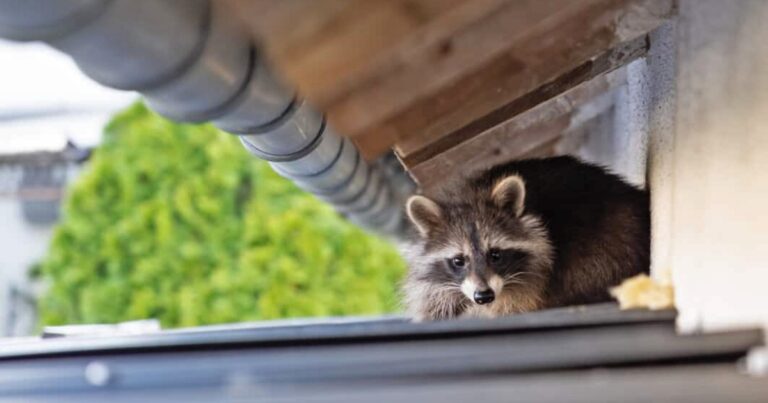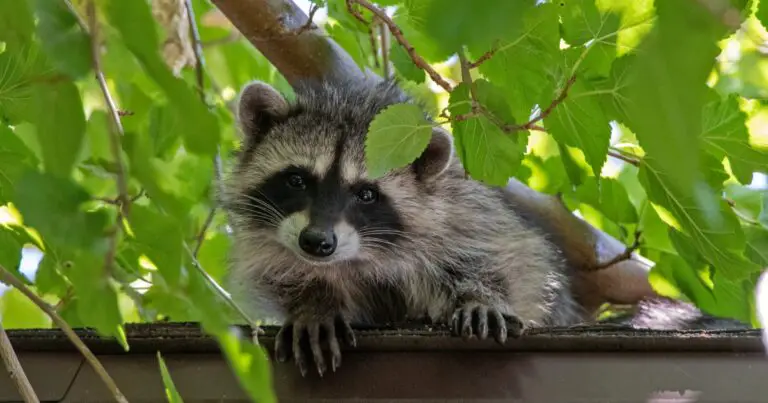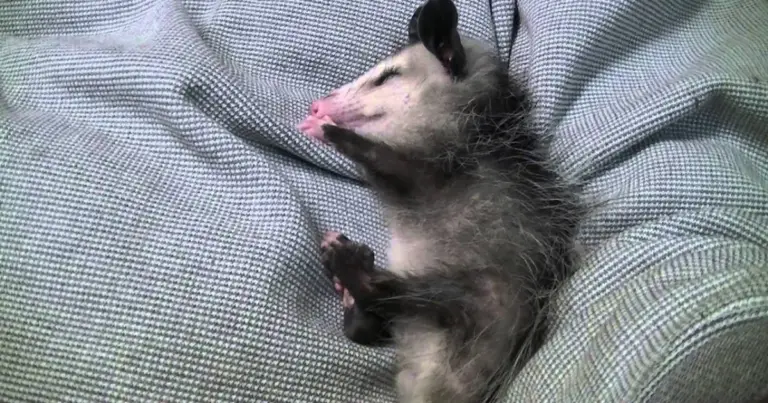How to Get Rid of a Raccoon in the Attic
Before evicting raccoons from your house, you need to figure out how they’re entering (that is, if you don’t want them coming right back in). Give your house a thorough inspection to find areas where raccoons could get in by viewing your house from the perspective of an animal looking for a den.
To determine if an opening is being used, block the hole loosely with wadded newspaper. Leave in place for two to three days.
If the newspaper goes undisturbed, and the weather has not been particularly cold or stormy, no one is using it as an entryway. If the newspaper is pushed out of place, someone has moved in.
What Should You Do If You Find A Family Of Raccoons In Your Attic?
Once you’ve figured out how they’re entering, inspect to see whether your unwanted guests are a mother raccoon with young. If that’s the case, wait a few weeks until the babies are old enough to leave with their mother—they won’t last long without her.
Don’t try to capture and relocate the family on your own. Unless done by a professional who knows how to reunite mothers with their young, it almost always results in youngsters being separated (and probably dying). The reunification method allows the mother raccoon to take her youngsters to another den location at her own pace.
One-way Doors
A “one-way door” is a technique employed by some experts to remove raccoons from attics or crawl spaces. They can’t return once they’ve departed. These doors should only be utilized by specialists who can ensure that mothers aren’t separated from their litters. The youngsters must be old enough and mobile enough to get through the one
Humane Harassment Can Get Them To Leave
If you’re certain you’re only dealing with adults, you can attempt humane approaches to get them to depart on their own.
- To begin, start small. Try utilizing bright lights, noisy sounds (install a loud battery-operated radio in the attic or fireplace), and foul odors (mix a bowl of apple cider vinegar).
- Try multiple techniques together. Multisensory harassment works best: light, noise, and smell.
- Choose the right time. Raccoons are particularly active at dusk, just before the mother’s regular activity period. Don’t drive raccoons away during the day. Raccoons are mostly nocturnal, which means they may be confused in daylight and are considerably more vulnerable.
Take Measures To Ensure That Raccoons Can’t Come Back
The first step is to persuade the raccoon to depart. The second step is to keep raccoons (and other animals) out in the future. Many people set a trap, capture the raccoon, and kill or relocate it. But unless you seal off house entries, there’s nothing to prevent another creature from moving in.
Until you’re confident that all the raccoons have departed, don’t close an entryway. You don’t want to trap a raccoon or her young inside your home for your safety or the raccoon’s.
Cover all holes with substantial fabric, such as wire mesh, sheet metal, or metal flashing, once you’ve identified possible points of entry, made sure no raccoons are inside, and completed any necessary cleanup. The ideal wire mesh for the job is 16 gauge (about 0.06 inches in diameter) with half-inch openings.
Will Raccoons Leave The Attic On Their Own?
Raccoons will not typically leave on their own. It takes approximately 8-9 months for a raccoon to mature and depart on its own, after which the female gives birth to a new litter of raccoon pups.
However, they can find their way out if they want to. The best thing to do is to try and make it an unpleasant place for them to live without making the mother run away from her young if there are any. If the mother feels that it is not a good place to raise her young she will move them from your home.
Can Raccoons Break Through Your Ceiling Or Walls?
Raccoons have little hands and can grasp and are able to lift tiles up if they want to. Drywall ceilings are somewhat stronger than drop ceilings, but they should never be trusted when inspecting an attic. Their strength is dependent, to a great extent, on the quality of the workmanship that went into installing them.
Raccoons typically only weigh 10 to 20 lbs, which should not break through the drywall or ceiling. However, they go to the bathroom wherever they like. And the damage caused by water and their urine can weaken the drywall and ceiling.
It’s not impossible for a raccoon to fall through the ceiling. However, you can make sure that this doesn’t happen by taking care of the issue as soon as possible.
How Much Does It Cost To Have Professionals Remove Raccoons From Your Attic?
Raccoon removal services can assist you solve raccoon problems in your house or garage. Because of the constraints of wildlife law, removing raccoons and other animals necessitates specialist training and procedures for safe and successful extraction and relocation. The cost of pest control services varies based on a variety of factors, including the type of pest you have and the severity of the infestation.
Here is a list of average costs for you to expect:
| Item | Cost |
|---|---|
| Initial inspection | $75 to $100 per inspection |
| Live trap | $80 to $110 per trap/raccoon |
| Removal of dead raccoons | $275 to $300 per animal |
| Removal of nests | $500 per nest |
| Exclusion barrier installation | $10 to $20 per linear foot |
| Cleanup and sanitization | $500 per service |
| Damage repair | $100 to $1,000 per repair |
| Total | $175 to $1,500 ($450 Average) |
When animals die in walls or other hard-to-reach sites, it generally costs more to remove the dead than the living. It may also be more expensive to get rid of raccoons because they are harder to trap and remove, and simply because they are big. The number of trips required to release and reset traps will influence how much you spend.
Does Homeowners Insurance Cover Damage Caused By Raccoons?
If raccoons damage or destroy the roof, attic, or other portions of your home’s construction, a standard homeowners insurance policy may cover the costs of repairs. Homeowners, on the other hand, are generally responsible for repairing or replacing personal belongings such as clothing, electronics, and furniture that have been damaged by raccoons.
Always check your homeowner’s policy to see what it covers.
Conclusion
Although raccoons can be a nuisance, they are not something to take lightly. They can cause extensive damage if left untreated and can even be dangerous. If you think you have a raccoon problem in your attic, it is best to call professionals to help remove them as soon as possible.
It may cost more than if you were to try and do it yourself, but it is worth the peace of mind knowing that the job was done properly. And remember, always seal off any entry points so that the raccoons cannot come back!
There are many raccoon removal companies that can assist you with raccoons in the attic or raccoons in your ceiling. They will come to remove them and seal off any entry points so that they cannot return.







2 Comments